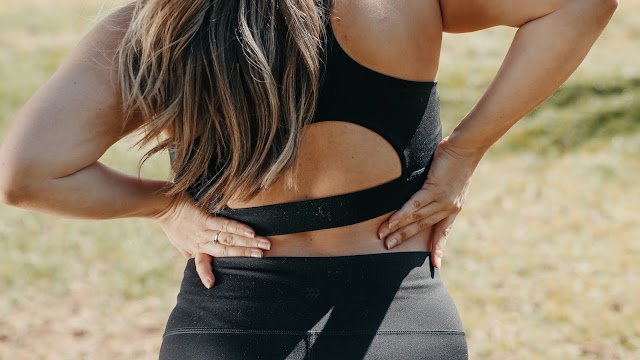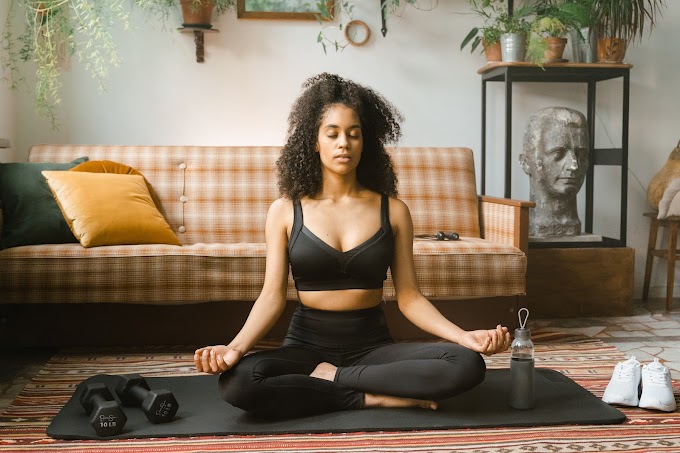10 Ways to Ease Back Pain
1. A Good Night's Sleep
Sleep disturbances are common among people with chronic back pain, and not getting enough quality sleep may actually worsen inflammation and pain. For a better night's sleep, invest in a good mattress and experiment with different sleeping positions. Adding an extra pillow under your body can help maintain the natural curve in your spine. If you’re a back sleeper, try putting the pillow under both knees; for stomach sleepers, try under your pelvis. If you sleep on your side, sleeping with a pillow between the knees may help.
2. Gentle Exercise
When you have back pain, the best thing to do is rest until the pain subsides, right? Not necessarily. Too much rest can worsen certain types of back pain and decrease muscle strength — and strengthening and stretching the muscles may actually reduce or eliminate many types of back pain. Instead, start with gentle stretches and experiment to see how you can get moving without pain. Try going out for a slow, easy walk, and pick up the pace when you can. Remember, it's best to discuss your current fitness routine and any changes to it with your doctor to avoid aggravating your condition.
3. Healthy Weight
"Having excess weight pulling on your back all day (except when you're lying down) is just bad news for your back," says Lauri Grossman, DT, a licensed chiropractor in private practice in New York City. "Often times, when people who wrestle with back pain for a lifetime lose a few pounds, they find that the pain that they've taken a million medications for and a million vitamins for just goes away." If you're having trouble shedding extra pounds, consider consulting with a registered dietitian or personal trainer.
4. Bodywork
"Whenever I work with any patient, I always want to make sure they're getting some form of bodywork," Dr. Grossman says. "I think that's very important — whether it’s chiropractic, osteopathy, physical therapy, or some form of body therapy."
5. Yoga
According to Susi Hately, owner of Functional Synergy, Inc., in Alberta, Canada, and author of several international best-selling yoga books, yoga can be very therapeutic for people with back pain as well. A review of scientific studies published in 2013 in the Clinical Journal of Pain found strong evidence that yoga can help reduce chronic low back pain. Yoga may help improve back pain by loosening tight muscles, building strength and range of motion, and improving breathing, explains Hately. Yoga also focuses on relaxation, which may help to relax your muscles as well as reduce pain perception.
6. Painkillers
For short-term pain relief, over-the-counter pain relievers including acetaminophen and NSAIDs (non-steroidal anti-inflammatory drugs) are sometimes suggested. The most common NSAIDs include aspirin, ibuprofen (Advil, Motrin), and naproxen (Aleve). Potential side effects of NSAIDs include stomach and liver problems. Talk to your doctor if you don't find relief after taking the recommended dose.
7. Supplements and Herbal Therapies
Looking for a natural way to manage your back pain? You might consider supplements or herbal therapies. Here's what Grossman advices for her patients:
- Glucosamine sulfate: This supplement may help lessen back pain caused by arthritis, she says. However, scientific studies on the efficacy of glucosamine sulfate are mixed — some show a lessening of pain with the supplement while others don’t.
- Calcium and magnesium: When taken together, these supplements may help reduce muscle spasms, Grossman adds. In fact, a study published in March 2013 in Anaesthesia found that magnesium therapy helped to reduce pain intensity and improve lumbar spine mobility in patients with chronic low back pain.
- Herbal therapies: “When back spasms are so strong you can barely move from the bed,” Grossman says, she suggests the homeopathic medicine Bryonia; when you have soreness after overexertion, she uses Arnica. Keep in mind, there’s little scientific evidence that herbals such as Bryonia and Arnica are effective treatments for back pain; though, a study published in Alternative Therapies in Health and Medicine in 2016 suggested they might help to reduce chronic low back pain from arthritis when combined with physical therapy.
- Topical treatments: One potential concern with dietary supplements is that some may interfere with medications you’ve been prescribed to treat back pain or other health conditions. For this reason, Grossman suggests topical treatments: “Gels and creams can be very helpful and won't interfere with supplements or medications,” she explains. “They're generally inexpensive, too.”
When considering supplements and herbal therapies, always talk to your doctor first about potential risks and side effects, interactions with other medications, and which therapies may benefit you.
8. Heat and Cold
"I always tell my patients to experiment with hot and cold packs to see which feels better for them," says Grossman. Generally speaking, cold therapy (applied via an ice pack) works better for inflammation and helps to reduce swelling, while heat (via a hot water bottle or heating pad) is ideal for reducing tension, cramping, and muscle spasms.
9. Aquatic Therapy and Whirlpools
Physical therapists often recommend aquatic therapy — including exercises done in warm, therapeutic pools — for back pain. The buoyancy of the water helps alleviate strain on the joints to encourage strengthening and gentle stretching of the muscles. Even floating in warm water can help relax muscles and release tension as well as increase circulation, according to the Arthritis Foundation. With home whirlpool baths, try aiming the jets directly at your sore spots for a soothing underwater massage.
10. Electric Stimulation
Transcutaneous electrical nerve stimulator (TENS) machines are small, battery-powered devices that transmit low-voltage electrical currents through electrodes that are attached to your skin. Considered very safe, TENS machines, according to one theory, work by scrambling the message of pain to the brain — literally blocking it. Another theory suggests that the electrical impulses cause a release of endorphins that override the sensation of pain. Many back pain patients have had success with TENS machines, though their effectiveness has not been clearly proven in controlled studies. Ask your doctor or physical therapist if this therapy might be right for you.
Important : Are You Really Suffering From Back Pain - Try This













.jpg)




